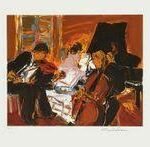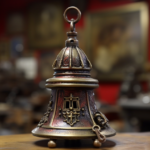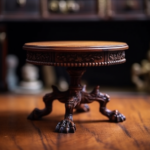A Brief History of Antique Wrenches
Primitive adjustable wrenches, also known as monkey wrenches, are believed to have taken the name from the tool’s inventor, Charles Moncky. He patented an improved version of the wrench in 1858. This fact can help during accurate antique wrench identification.
In use since the early 1800s, these wrenches were commonly made of iron or steel and had a threaded screw mechanism. This system allowed the jaws of the wrench to be adjusted before fitting it to different-sized bolts or nuts.

Antique wooden handle wrenches were popular in the 19th century before the widespread use of metal handles. Often hand-crafted and created by skilled artisans, these wrenches are rare and highly valued by collectors today.
From wooden-handled wrenches in the early 19th century to adjustable models produced during the Victorian era, antique wrenches showcase a wide array of craftsmanship styles and design variations. With the progress of the industrial revolution, mass production of wrenches through machine manufacturing became more common.
Some collectors focus on acquiring wrenches that have elaborate designs, intricate engravings, or were created using unique materials, especially for their handles. These wrenches can range in value from a few dollars for common models to several hundred or even thousands of dollars for rare or highly desired antique wrenches.
The Art of Antique Wrench Identification: Key Characteristics to Look For
Identifying antique wrenches can be a challenging endeavor for collectors and enthusiasts. But it can also be rewarding to learn about the history of these rusted relics and discover their valuable stories.
While it’s true that one must develop a keen eye and understanding of antiques to be able to accurately identify these old tools, it also helps to know some tips and tricks to master the art of antique wrench identification. Let’s take a look at some important ones:
Design and construction
As technology advanced antique wrenches too evolved. It helps to learn about the various design changes that occurred during different eras. This learning will help you to accurately determine the approximate age of your antique wrench. Similarly, knowing details about the design and construction techniques of antique wrenches will help you date them with precision. For instance, wrenches that were manufactured during the late 19th and early 20th centuries often exhibit intricate designs and exceptional craftsmanship. These elegant pieces were meticulously forged by skilled blacksmiths or machinists and are highly valued for their uniqueness.
Markings
Many antique wrenches have markings or stamps on them. These were engraved by manufacturers who would often add their logo or name on the handle of the wrench or on its jaw. You will need to decipher these markings and relate them to other valuable information that you have to unearth the origin of the wrench. Many companies too left their imprint on these tools. The presence of names, initials, or even serial numbers on the wrenches signifies the origin and authenticity of these antique tools. You will need to extensively research to gauge the rarity and age of a particular wrench.
Research and study
For accurate antique wrench identification, you need to immerse yourself in detailed study and research on antique tools. It will help to familiarize yourself with the names of different manufacturers, tool styles, markings, logos, and historical periods of when the tools were crafted. You can use online resources, books, and forums that discuss tool collection and how to identify them.
Condition
Examining the overall condition of an antique wrench helps uncover clues related to its value and historical significance. Wrenches that display signs or use with minimal wear or patina may attract particular enthusiasts and collectors. Antique wrenches that display signs of use also point to their age and era. However, you need to be cautious when encountering heavily rusted or damaged wrenches. Such antique pieces might not retain much value unless they possess extraordinary historical significance.
Unique Features
In earlier times every manufacturer of wrenches and tools introduced distinct features in their designs. This they did to set themselves apart from competitors. As a collector, you will need to closely examine the handle of the antique wrench, check the type of jaw, and look at other specialized features that can help you correctly identify your tool.
Expert Advice
While you can accurately carry out antique wrench identification on your own, sometimes seeking expert advice can help you examine your tool better. Seasoned collectors, appraisers, and even local tool-collecting clubs can provide valuable guidance with their extensive knowledge and experience. Professional appraisers from Appraisily can easily help and guide you with the identification of antique wrenches.
Cited Source
https://www.txantiquemall.com/antique-wrench-identification/





